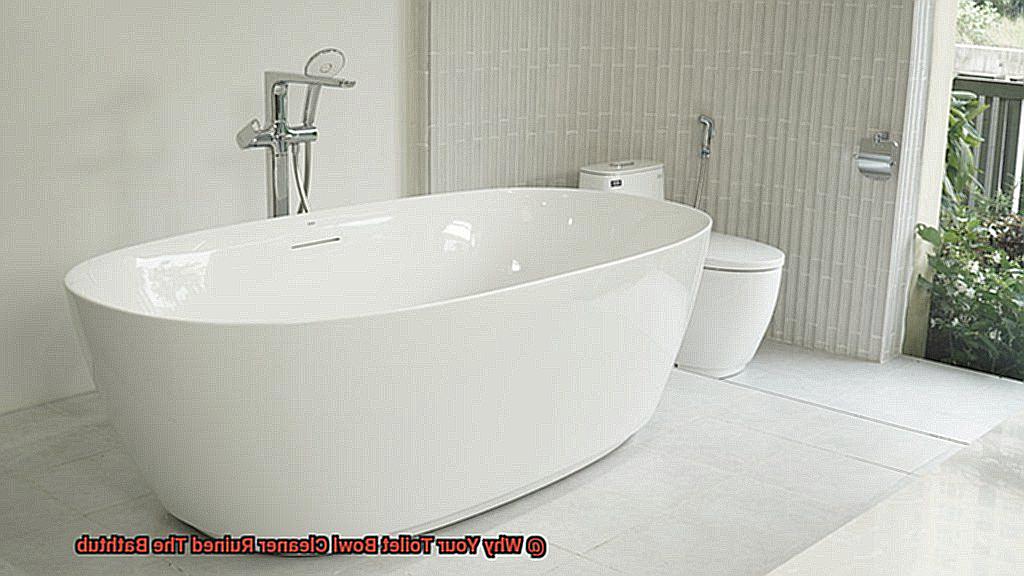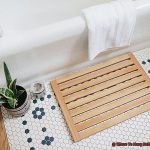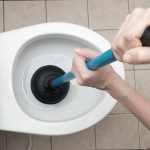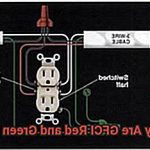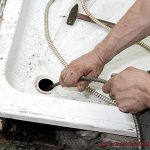Imagine this: you’ve just finished scrubbing your toilet bowl with your go-to cleaner, confident that it’s eliminated all germs and bacteria.
Feeling accomplished, you turn your attention to the bathtub, eager to give it the same treatment. But as soon as you finish cleaning, you notice an unsightly discoloration on the surface of the tub.
It hits you like a ton of bricks – your toilet bowl cleaner has ruined your beloved bathtub. Unfortunately, this is a common problem that many people face when using harsh toilet bowl cleaners on their bathtubs.
The chemicals in these cleaners can cause stains, scratches and etches that are impossible to remove. But why does this happen?
And how can you avoid it? In this blog post, we’ll dive into the science behind why toilet bowl cleaners are so harmful to bathtubs and what you can do to prevent damage.
So, let’s find more!
Contents
- 1 What is Toilet Bowl Cleaner?
- 2 How Toilet Bowl Cleaners Can Damage Bathtubs
- 2.1 Harsh Chemicals in Toilet Bowl Cleaners Can Damage Bathtubs
- 2.2 Discoloration and Staining on Bathtubs Caused by Toilet Bowl Cleaners
- 2.3 Abrasives in Toilet Bowl Cleaners Can Scratch Bathtub Surfaces
- 2.4 Prevention is Key When it Comes to Protecting Your Bathtub from Toilet Bowl Cleaner Damage
- 2.5 Options for Restoring a Bathtub Damaged by Toilet Bowl Cleaner
- 3 Common Chemicals Found in Toilet Bowl Cleaners
- 4 The Dangers of Using Bleach or Abrasive Agents on Your Bathtub Surface
- 5 Tips for Preventing Damage to Your Bathtub from Toilet Bowl Cleaner
- 6 What to Do If You Have Already Used Toilet Bowl Cleaner on Your Bathtub
- 7 Conclusion
What is Toilet Bowl Cleaner?
Toilet bowl cleaner is an essential part of keeping your bathroom clean and hygienic.
It’s a chemical solution designed specifically to clean and disinfect toilet bowls, using a combination of acidic or alkaline chemicals to break down stains and bacteria. Common ingredients found in toilet bowl cleaners include citric acid, bleach, hydrochloric acid, and sodium hydroxide.
Toilet bowl cleaners come in many forms, including liquids, gels, powders, and tablets. Each type is designed to be effective at removing stains and bacteria from your toilet bowl.
Liquid and gel cleaners are applied directly to the inside of the toilet bowl, while powders are mixed with water before application. Tablets are dropped into the toilet tank and dissolve slowly over time to keep the bowl clean and fresh.
But it’s important to use caution when using toilet bowl cleaner. Many of these cleaners contain harsh chemicals that can damage surfaces like porcelain, ceramic tile, and even metal.
If these cleaners come into contact with other surfaces in the bathroom, such as the bathtub or sink, they can cause discoloration or even permanent damage. To avoid damage, always read the label carefully before using any type of cleaning product.
Avoid using harsh chemicals or bleach on sensitive surfaces like bathtubs. Instead, opt for mild soap or a specialized bathtub cleaner that is designed for use on your specific bathtub material.
If you’ve already used a toilet bowl cleaner on your bathtub and are experiencing discoloration or other damage, don’t worry. It’s not too late to restore your bathtub to its original condition.
Seek professional help from a bathtub refinishing specialist who can assess the damage and recommend the best course of action. In summary, toilet bowl cleaner is an essential tool for keeping your bathroom clean and hygienic.
How Toilet Bowl Cleaners Can Damage Bathtubs
This is because many toilet bowl cleaners contain harsh chemicals that can eat away at the surface of the tub, leaving it discolored, pitted, or even cracked. In this blog post, we will explore how toilet bowl cleaners can damage bathtubs and provide practical tips on how to prevent and repair this damage.
Harsh Chemicals in Toilet Bowl Cleaners Can Damage Bathtubs
Toilet bowl cleaners are designed to dissolve and break down tough stains and buildup in your toilet bowl. However, the same powerful chemicals that make these cleaners effective can also cause damage to more delicate surfaces like bathtubs.
When these chemicals come into contact with the surface of your tub, they can begin to break down the protective layer of enamel or porcelain that covers it.
Over time, this can lead to fading, discoloration, and even cracks in the surface of the tub.
Discoloration and Staining on Bathtubs Caused by Toilet Bowl Cleaners
One of the most common types of damage caused by toilet bowl cleaners to bathtubs is discoloration or staining. This occurs when the cleaner comes into contact with the surface of the tub and is not immediately rinsed away.
Over time, the chemicals in the cleaner can react with the surface of the tub, causing it to become discolored or stained. To prevent this type of damage, it’s crucial to rinse your bathtub thoroughly after each use of toilet bowl cleaner.
Abrasives in Toilet Bowl Cleaners Can Scratch Bathtub Surfaces
Some toilet bowl cleaners contain abrasives or other harsh chemicals that can scratch or etch the surface of your bathtub.
Over time, this damage can become more pronounced, leading to a rough or pitted surface that is difficult to clean and may even be prone to further damage.
To prevent this type of damage, it’s important to choose a cleaner that is specifically designed for use on porcelain or enamel surfaces.
Prevention is Key When it Comes to Protecting Your Bathtub from Toilet Bowl Cleaner Damage
Prevention is always the best course of action when it comes to protecting your bathtub from damage caused by toilet bowl cleaner. It’s crucial to choose a product that is specifically designed for use on porcelain or enamel surfaces and to follow the manufacturer’s instructions carefully.
Additionally, you should never leave cleaner on the surface of your tub for longer than recommended.
A simple step like rinsing your bathtub thoroughly after each use of toilet bowl cleaner can go a long way in preventing damage.
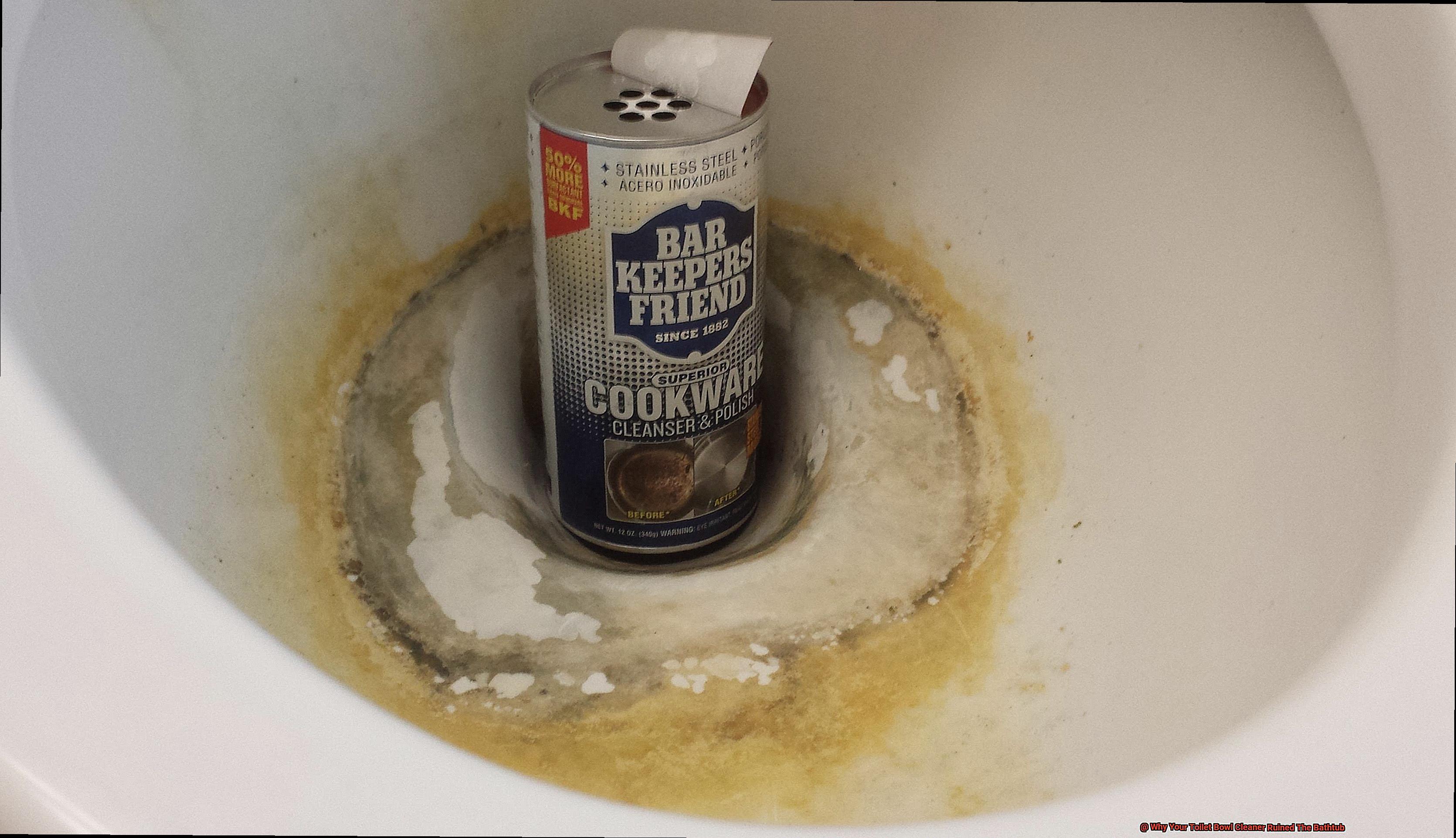
Options for Restoring a Bathtub Damaged by Toilet Bowl Cleaner
If you accidentally damage your bathtub with toilet bowl cleaner, don’t worry, there are a few potential solutions that may be able to help.
Common Chemicals Found in Toilet Bowl Cleaners
It’s no secret that we all want a clean and disinfected toilet, but we often overlook the potential damage that these cleaning products can cause to other surfaces.
One of the most damaging chemicals found in toilet bowl cleaners is hydrochloric acid. This potent chemical can eat away at your bathtub’s surface, causing discoloration, corrosion, and even permanent damage.
Think of it like a monster that devours anything in its path – hydrochloric acid is that monster and your bathtub is its unsuspecting victim. Bleach is another common chemical found in toilet bowl cleaners that can be harsh on certain surfaces.
While it’s great at killing germs and bacteria, it can cause discoloration or even corrosion when it comes into contact with some types of metal or plastic. So, if you’re not careful, your bathtub could end up looking less than desirable.
Other chemicals to watch out for in toilet bowl cleaners include ammonia, phosphoric acid, and citric acid. While they’re generally safe when used as directed, they can still cause harm to certain surfaces if not rinsed off properly.
These chemicals may not cause immediate harm, but if left unchecked, they can slowly eat away at your bathtub’s surface over time. To keep your beloved bathtub safe from harm, always read the label carefully and use the product as directed.
If you’re ever unsure about whether or not a particular cleaner is safe for use on your bathtub, it’s best to err on the side of caution and choose a different product specifically designed for cleaning bathtubs. Remember, prevention is always better than cure.
The Dangers of Using Bleach or Abrasive Agents on Your Bathtub Surface
When it comes to cleaning your bathroom, you want to use the best products to get the job done.
However, not all cleaners are created equal, and some can actually do more harm than good. In particular, using bleach or abrasive agents on your bathtub surface can lead to disastrous consequences.
Bleach is a potent chemical that can cause serious damage to your bathtub surface. It can corrode the finish, leading to discoloration and fading over time.
Moreover, bleach contains chlorine, which can be harmful when inhaled or when it comes into contact with your skin or eyes. It’s like inviting a monster into your bathtub that devours everything in sight.
Similarly, abrasive agents like scouring pads or powders may seem harmless at first, but they can scratch the surface of your bathtub. This leaves unsightly marks that are difficult to remove and damages the surface of the bathtub permanently.
So what’s the alternative? The answer is simple: use non-toxic cleaners like vinegar and baking soda.
These natural cleaners are safe for use on your bathtub surface and effective at removing dirt and grime without causing any harm. They are gentle and won’t damage your bathtub in any way.
If you prefer commercial cleaners, choose one specifically designed for use on bathtubs. These cleaners are formulated to be gentle on surfaces while still getting the job done.
They’re safe and effective. Ultimately, using bleach or abrasive agents on your bathtub surface is like playing with fire – it’s just not worth the risk.
Tips for Preventing Damage to Your Bathtub from Toilet Bowl Cleaner
Your bathtub is one of the most important fixtures in your bathroom. It’s where you go to relax and unwind after a long day, or where you get ready to tackle a new one.
However, using the wrong cleaning products can cause permanent damage to your tub’s surface. One of the biggest culprits of this is toilet bowl cleaner.
Here are some tips for preventing damage to your bathtub from toilet bowl cleaner.
Read the Label
Always read the label on your toilet bowl cleaner before using it in your bathtub. Some cleaners contain harsh chemicals that can eat away at the finish of your tub or cause discoloration. Look for cleaners that are specifically labeled as safe for use on bathtubs or that contain gentler ingredients such as citric acid.
Use a Bathtub-Specific Cleaner
Consider switching to a cleaner specifically designed for bathtubs. These cleaners are less harsh than traditional toilet bowl cleaners and are safe for use on surfaces like porcelain, enamel, and acrylic.
Dilute the Cleaner
If you must use a toilet bowl cleaner on your bathtub, dilute it with water first. This will reduce the concentration of the chemicals and minimize the risk of damage to your tub. Simply mix the cleaner with water according to the instructions on the label before applying it to your bathtub.
Apply the Cleaner Carefully
When applying the cleaner, be careful not to get it on any part of the tub that is not stained or dirty. Use a soft-bristled brush to apply the cleaner only to the affected areas. This will help prevent any unnecessary damage to your bathtub’s surface.
Rinse Thoroughly
After cleaning, rinse your bathtub thoroughly with water to remove any remaining residue. This will help prevent any chemical buildup and potential damage.
Be sure to rinse every nook and cranny of your tub to ensure all residue is removed.
Use Alternative Cleaning Methods
Consider using natural cleaning methods such as vinegar and baking soda. These cleaners are safe for use on bathtubs and are also effective at removing stains and grime.
Simply mix equal parts baking soda and water to create a paste, apply it to your tub, and let it sit for 15-20 minutes before rinsing it off with water.
So, preventing damage to your bathtub from toilet bowl cleaner is all about using the right cleaner, diluting it properly, applying it carefully, rinsing thoroughly, and considering alternative cleaning methods. By following these tips, you can keep your bathtub looking brand new for years to come.
What to Do If You Have Already Used Toilet Bowl Cleaner on Your Bathtub
Your bathtub is a place of rest and relaxation, but if you’ve accidentally used toilet bowl cleaner on it, you may be left with unsightly stains or damage.
There are steps you can take to fix your bathtub and prevent this from happening again. In this article, we’ll explore five methods to help you restore the beauty of your bathtub.
Rinse Thoroughly
The first thing to do when you’ve used toilet bowl cleaner on your bathtub is to rinse the affected area thoroughly with water. This will help dilute the cleaner and remove any residue that may have been left behind. Be sure to wear gloves and open a window for ventilation while doing this.
Apply Baking Soda Paste
Baking soda is a natural abrasive that can help remove stains without damaging the surface of your bathtub. Mix equal parts baking soda and water to create a thick paste, then apply it to the stained area using a soft cloth or sponge. Let the paste sit for 15-20 minutes, then rinse it off with warm water. This method is gentle yet effective in removing stains.
Use a Non-Abrasive Cleaner
If the stain persists after using baking soda, try using a non-abrasive cleaner specifically designed for use on bathtubs. Look for products that are labeled as safe for use on acrylic or fiberglass surfaces, as these materials are commonly used in bathtub construction. Just make sure to follow the instructions carefully and wear gloves to protect your skin.
Seek Professional Help
If these methods still do not work, it may be time to consider refinishing or replacing the bathtub altogether. In this case, it is best to consult a professional for advice and assistance. They will be able to assess the damage and recommend the best course of action.
Prevention is Key
Prevention is always better than cure, and it’s no different when it comes to avoiding damage from toilet bowl cleaner on your bathtub. Always read labels carefully and use products specifically designed for your bathroom surfaces. If in doubt, test a small area first before applying to the entire surface. By doing so, you can prevent any future damage to your bathtub.
So, using toilet bowl cleaner on your bathtub can cause permanent damage if not used properly. However, if you’ve already made this mistake, don’t worry – there are ways to fix it.
ccaNPiSsjxM” >
Conclusion
In conclusion, it’s important to be cautious when using toilet bowl cleaner on your bathtub.
The harsh chemicals in these cleaners can cause significant damage if not used properly, leading to discoloration, stains, scratches, and even cracks. But don’t worry – there are several ways to prevent this from happening.
To start, always read the label carefully before using any cleaning product and opt for a cleaner specifically designed for bathtubs. Diluting the cleaner with water beforehand can also reduce the risk of damage.
When applying the cleaner, use a soft-bristled brush and only apply it to affected areas. After each use of toilet bowl cleaner, rinse your bathtub thoroughly and consider trying natural cleaning methods like vinegar and baking soda.

